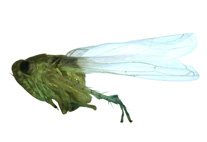Abstract
In 1931, Ernst Ahl described two species of reed frogs inhabiting montane forests of the Albertine Rift in East Africa, Hyperolius alticola and H. discodactylus, which were synonymized two decades later by Raymond Laurent. Since then, this revision has been questioned repeatedly, but taxonomists have been reluctant to make a conclusive decision on the matter, especially since the type material of H. alticola was reported as being lost. Here, we examine the rediscovered type material of H. alticola and reassess the validity of Laurent’s synonymy using morphological data from historic and new collections including all available type material, call recordings and molecular data from animals collected on recent expeditions. We find evidence for a northern and southern genetic clade, a divide that is somewhat supported by diverging morphology as well. However, no distinction in advertisement calls could be recovered to support this split and both genetic and morphological differences between geographic units are marginal and not always congruent and thus more likely reflect population-level variation. We therefore conclude that H. alticola is not a valid taxon and should continue to be treated as a synonym of H. discodactylus. Finally, we also report on newly collected material from outside the species known range, with first records of this species from Burundi.

